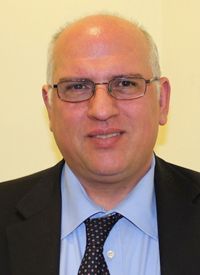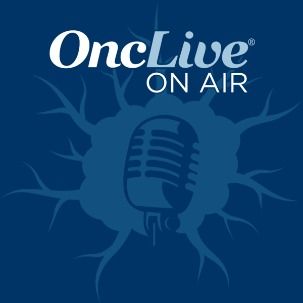Article
COVID-19: Practical and Immuno-Oncology Insight in Melanoma and Beyond
Author(s):
Paolo A. Ascierto, MD, discussed lessons he has learned from the COVID-19 crisis both in the melanoma treatment paradigm and in the broader immuno-oncology spectrum.
Paolo A. Ascierto, MD

Paolo A. Ascierto, MD
The COVID-19 pandemic has caused a healthcare crisis across the globe, with some countries, such as Italy, being hit worse than others.
In a presentation during the 2020 virtual annual meeting of the American Association for Cancer Research, Paolo A. Ascierto, MD, Unit of Melanoma, Cancer Immunotherapy and Innovative therapy, National Tumour Institute “Fondazione G. Pascale,” Napoli, Italy, discussed lessons he has learned from the COVID-19 crisis both in the melanoma treatment paradigm and in the broader immuno-oncology spectrum.
COVID-19 and the Melanoma Paradigm
Ascierto began his discussion with an overview of how his clinical practice has adapted to the COVID-19 pandemic across all phases of the melanoma treatment paradigm.
Regarding surgery, he said high priority should be given to patients with T3 (2-4 mm) and T4 (>4 mm) lesions, with medium priority given to patients with T1 (<1 mm) and T2 (1-2 mm) lesions. “Depending on the local COVID-19 situation, delaying surgery is acceptable, as this has not been shown to influence survival,” said Ascierto. He also noted that in patients with T1a or lower disease, wide excision alone is sufficient in medium priority patients.
Ascierto also stressed that the highest priority should be given to patients with stage III melanoma eligible for curative resection, patients requiring resection for oligometastatic disease, and patients requiring surgical management of complications from surgical procedures.
Follow-up after surgery should be done through telemedicine and, especially when there is no evidence of disease, a clinical visit should be postponed, Ascierto noted.
Regarding adjuvant care, treatment can be delayed up to 12 weeks. He said that for patients with BRAF-mutant melanoma, “depending on the local hospital situation," adjuvant BRAF/MEK inhibition would be an optimal approach. Another strategy he recommended was opting for the longer dosing schedule when using checkpoint inhibitors, meaning, for example, pembrolizumab (Keytruda) at 400 mg every 6 weeks or nivolumab (Opdivo) at 480 mg every 4 weeks. (Of note, the every-6-weeks pembrolizumab dosage was just approved by the US FDA across all indications in adult patients.)
Ascierto emphasized that patients with metastatic disease are the highest priority. In these patients he said there should be “no stops or delays for targeted therapies or immunotherapies for unresectable stage III or IV melanoma.” The only potential action to take with these patients is “where possible, use a longer treatment schedule,” said Ascierto.
Regarding clinical trials, Ascierto said that many of these studies are on hold, and those that are open are largely employing telemedicine. His general recommendations concerning clinical trials were that for patients receiving treatment, the goals should be “assuring the safety of trial participants, maintaining compliance with good clinical practice, and minimizing risks to trial integrity and quality of data.”
Final clinical practice tips Ascierto offered were that patients receiving immune checkpoint inhibitors showing signs of pneumonitis on CT scans should be tested for COVID-19 before administering steroids, and patients receiving BRAF/MEK inhibitors who have a fever that does not resolve with treatment interruption also require a COVID-19 test.
Immuno-Oncology and COVID-19
Moving beyond melanoma to immuno-oncology as a whole, Ascierto said that research is showing that lessons learned over the years in immuno-oncology can be applied to the treatment of COVID-19, particularly the host inflammatory response phase of the disease.
Inflammatory adverse events are associated with immune checkpoint agents; for example, pneumonitis, or inflammation of the lung tissue, can occur. This toxicity is in line with cytokine storm, which has emerged as a complication with COVID-19.
Cytokine storm is a severe immune reaction in which too many cytokines are released too quickly into the blood by the body, resulting in a severe immune overreaction. This can result in lung inflammation, causing life-threatening respiratory complications. Thus, Ascierto noted, drugs used to treat pneumonitis, such as tocilizumab (Actemra), have emerged as investigational treatments for cytokine storm in patients with COVID-19.
A similar lesson can be learned from cytokine release syndrome (CRS), a serious side effect of CAR T-cell therapy. This is due in part to the proinflammatory cytokine IL-6, a prominent cytokine in CRS. Research has shown that cytokine storm can result from overproduction of IL-6. Thus, drugs that target IL-6 that are used to treat CRS can also be used to treat cytokine storm. Here again, tocilizumab emerges as an option, as the drug is an IL-6 inhibitor.
This hypothesis of targeting hyperinflammation with oncology drugs in patients with COVID-19 has been translated into practice in Ascierto’s clinic. His practice first used tocilizumab to treat a patient who had respiratory distress from COVID-19. The patient was a male born in 1972. He had a medical history of hypertrophic heart disease. He was hospitalized on March 7, 2020.
At baseline, he had a PaO2/FiO2 (P/F) ratio of 72, a partial pressure of oxygen (PO2) of 80 mmHg, and a partial pressure of carbon dioxide (PCO2) of 40 mmHg. He received tocilizumab on March 10, 2020. On March 16, 2020, he had recovered, with a P/F of 400, a PO2 of 100 mmHg, and a PCO2 of 39 of mmHg.
The second case study was a male patient born in 1993 with no comorbidity who was hospitalized with respiratory distress from COVID-19. At baseline, he had a P/F of 98, a PO2 of 59 mmHg, a PCO2 of 30 mmHg, and a C-reactive protein (CRP) of 24 (ULN <1).
He received tocilizumab and recovered. After treatment, he had a P/F of 250, a PO2 of 100 mmHg, a PCO2 of 39 mmHg, and a CRP of 4.2 (ULN <1). Further follow-up shortly after showed he had a P/F of 300, a PO2 of 100 mmHg, a PCO2 of 42 mmHg, and a CRP of 2.3 (ULN <1).
After observing these results, Ascierto’s clinic launched the TOCIVID-19 phase 2 trial, which had an enrollment of 330 patients who were hospitalized due to COVID-19. Patients had oxygen saturation at rest in ambient air ≤93% and had been intubated less than 24 hours before registration.
Patients received tocilizumab at 8 mg/kg up to a max of 800 mg/kg per dose. A second dose could be given after 12 hours. The primary end points were the lethality rate 2 weeks after registration and the lethality rate 1 month after registration. The initial data should be available soon. Ascierto said there was also a concomitant observational cohort for 1781 patients intubated more than 24 hours before registration.
Ascierto’s clinic also conducted a 15-patient case series using another IL-6 inhibitor, sarilumab (Kevzara). There were 3 females and 12 males. The median age was 59 years (range, 53-75). Eight patients had been intubated. Patients received a 400-mg subcutaneous dose of sarilumab in a single administration.
Ten patients responded to the treatment. Baseline characteristics of these patients included a median PaO2/FiO2 of 278 (range, 260-296), a median IL-6 of 56.6 pg/mL (range, 5.2-81.5), and a median absolute lymphocyte count (ALC) of 755 uL (range, 160-1490). The median baseline D dimer was 1127 ng/ml (range, 200-2907), the median CRP was 12.9 mg/dL (range, 3.5-27.8) and the median neutrophil lymphocyte ratio (NLR) was 9.5 (range, 1.9-22.7).
Ascierto highlighted 2 responder cases. The first was a male born in 1960 who recovered within 24 hours of sarilumab treatment. His baseline P/F was 94. Twenty-four hours after receiving sarilumab, his P/F was 124, and 72 hours later, his P/F was 198. The second responder case was a female born in 1957. Her baseline P/F was 83. Twenty-four hours after sarilumab treatment, her P/F was 135, and 72 hours later, her P/F was 185.
All 5 nonresponders died. Baseline characteristics among the nonresponders were a median PaO2/FiO2 of 60, a median IL-6 of 213 pg/mL (range, 60.5-1000), and a median ALC of 530 uL (range, 460-1100 ). The median baseline D dimer was 1884 ng/ml (range, 464-4250), the median CRP was 29.5 mg/dL (range, 1.1-30.5 ), and the median NLR was 19.5 (range, 14.6-25.2).
In his summary remarks, Ascierto said that several classes of oncology drugs beyond IL-6 inhibitors can also be investigated to target hyperinflammation in patients with COVID-19, including JAK inhibitors, IL-1 inhibitors, anti-TNF agents, anti—IL-17 and anti–IL-23 agents, and GM-CSF.
Ascierto PA. Experience in using oncology drugs in patients with COVID-19 infections. Presented at: 2020 virtual annual meeting of the American Association for Cancer Research; April 27-28, 2020.
As in other nations with high COVID-19 rates, the oncology community in Italy has had to adapt and develop best practices for prioritizing cancer care to ensure optimal outcomes.








